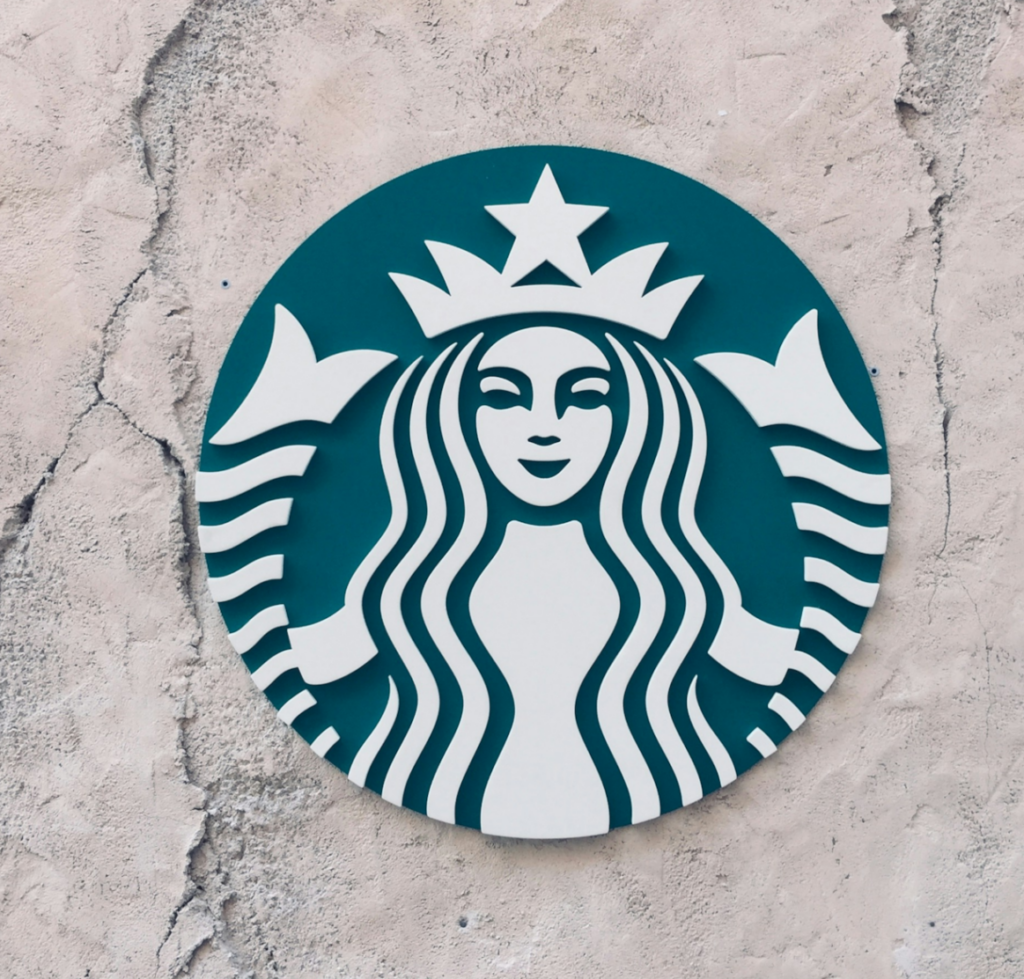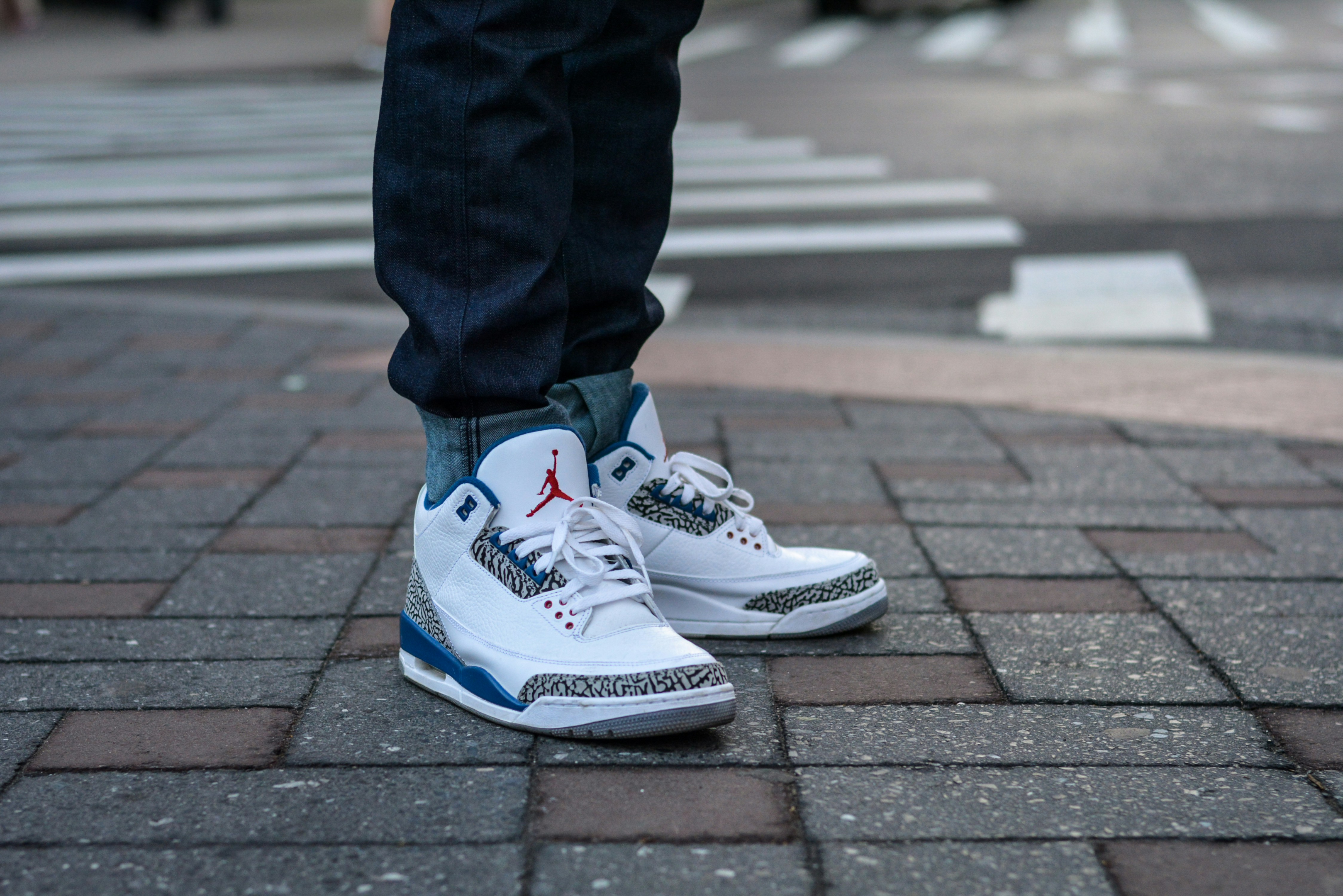
Individuals and businesses pursue copyright protection for their logos for several compelling reasons. Firstly, copyrighting a logo grants creators exclusive rights, preventing others from reproducing or using their distinctive visual identity without permission. This legal safeguard is crucial in preserving the unique elements that define a brand, ensuring that competitors cannot dilute its visual impact.
Secondly, copyright registration enhances the market value of a logo. Businesses invest significant time and resources in developing logos that convey their identity, values, and products. By securing copyright, companies signal their commitment to originality, professionalism, and innovation, contributing to increased credibility and consumer trust.

Thirdly, copyright serves as a powerful deterrent against infringement. With legal protection in place, individuals and businesses have the means to take legal action against unauthorized use, reinforcing the consequences of intellectual property violations. This proactive approach helps in safeguarding the investment made in logo design and marketing efforts.
This article will discuss United States copyright office registration, copyright infringement, and how copyright law works alongside trademark protection and trademark registration.
Understanding Copyright Law

Definition of copyright and its application to logos
Copyright of logos and designs refers to the legal protection granted to the original expression of creative ideas in tangible form. This intellectual property right safeguards the visual and aesthetic aspects of various designs, including graphics, illustrations, artwork, and other visual compositions. It provides the artist with exclusive rights to reproduce, distribute, display, and create derivative works based on the original design.
If an artist makes the logo as a part of their employment, then the employer owns the rights. The artist can transfer their rights. A transfer of copyright ownership is called an assignment. A license is when the artist or trademark owner only permits another person to use the design for particular purposes. Usually, a license has restrictions.
To qualify for copyright registration, a design must be original and fixed in a tangible medium, such as paper, canvas, or digital formats. The protection extends automatically upon creation, offering the designer the ability to control how their work is used and preventing unauthorized use by others. Copyright of designs does not cover the functional aspects of an object but rather focuses on the unique artistic expression embodied in the design.
This legal framework encourages creativity by granting designers the confidence to explore and share their ideas without fear of infringement. It also plays a crucial role in fostering innovation and ensuring that creators receive recognition and potential financial benefits for their artistic endeavors.
Differentiating between copyright, trademark, and other forms of intellectual property protection
Copyrights – Artistic, literary, or intellectually created works, such as novels, music, movies, software code, photographs, and paintings that are original and exist in a tangible medium, such as paper, canvas, film, or digital format. Examples include videos, photographs, and graphic designs.
Trademarks – A trademark is a word, phrase, design, or combination that identifies your goods or services, distinguishes them from the goods or services of others, and indicates the source of your goods or services. Examples are brands like the iPhone and Coca-Cola. The Trademark Electronic Application System (TEAS) is used to register trademarks with the trademark office.
Registered trademarks can be searched using the Trademark Electronic Search System (TESS).
Patents – Technical inventions, such as chemical compositions like pharmaceutical drugs, mechanical processes like complex machinery, or machine designs that are new, unique, and usable in some type of industry. A utility patent legally protects what a single invention does, how it is used, and how it works. Design patents legally protect what an invention or creative work looks like, its shape and configuration, and any specific ornamentation or coloration. Abstract ideas cannot be patented.
Trade Secrets – The Uniform Trade Secrets Act defines a trade secret as information, including a formula, pattern, compilation, program, device, method, technique, or process that (1) derives independent economic value, actual or potential, from not being generally known to, and not being readily ascertainable by proper means by, other persons who can obtain economic value from its disclosure or use; and (2) is the subject of efforts that are reasonable under the circumstances to maintain its secrecy.
Clarification of differences between logo copyright and trademark

The difference between trademark protection (see trademark application) and copyright can be explained by comparing the infringement of each right. “Infringement” means the violation of a particular right. Understanding the differences between these two types of infringement is crucial for individuals and businesses seeking to protect their creative works and brand identities.
Copyright and trademark infringement lawsuits are typically filed in federal court.
Copyright Infringement
Copyright infringement occurs when someone violates the exclusive rights of a copyright holder without obtaining permission. Copyright protects original works of authorship, including literary, artistic, and musical creations. Examples of copyrighted works include books, music compositions, paintings, and software. Infringement can take various forms, such as reproducing, distributing, performing, or displaying the copyrighted work without proper authorization.
The duration of copyright varies but typically lasts for the life of the author plus an additional number of years. During this time, the copyright holder has the exclusive right to control how their work is used and to authorize or prohibit others from using it.
Trademark Infringement
Trademark infringement, on the other hand, pertains to the unauthorized use of a trademark that is likely to confuse consumers regarding the source of goods or services. Trademarks protect symbols, names, logos, and other identifiers that distinguish goods or services in the marketplace. Examples of trademarks include company logos, brand names, and product slogans.
Unlike copyright, trademark protection can potentially last indefinitely, as long as the mark continues to be used and remains distinctive. Trademark infringement occurs when another party uses a mark that is similar enough to cause confusion among consumers, potentially diluting the distinctiveness of the original mark or leading consumers to believe they are dealing with the same source. Like copyrights, registration with the trademark office is not always required, although it can be beneficial to protect a company’s logo. Trademark watch can help an business owner to learn about trademark infringement of a business name.
Key Differences
1. Nature of Protection:
– Copyright protects original creative works.
– Although the trademark process is longer, it protects distinctive symbols, names, or identifiers associated with goods or services.
2. Scope of Rights:
– Copyright provides exclusive rights to reproduce, distribute, perform, and display the work.
– Trademark grants the exclusive right to use a distinctive mark in connection with specific goods or services. A trademark protects a broad use of a logo design.
3. Duration of Protection:
– Copyright protection has a limited duration, typically lasting for the life of the author plus a certain number of years.
– Trademark protection can potentially last indefinitely, as long as the mark is in use and remains distinctive.
4. Infringement Criteria:
– Copyright infringement occurs when someone uses the copyrighted work without authorization, engaging in activities like reproduction, distribution, or public performance.
– Trademark infringement occurs when someone uses a mark that is likely to confuse the marketplace regarding the source of goods or services.
Copyright infringement involves the unauthorized use of original creative works, while trademark infringement involves the unauthorized use of symbols or identifiers likely to confuse the source of goods or services. Both forms of infringement carry legal consequences, which vary.
Benefits of Copyrighting Your Logo

The use of copyright law to prevent unauthorized use and infringement is a cornerstone of intellectual property protection, providing creators with legal recourse to safeguard their original works. To copyright a logo grants the creators exclusive rights to reproduce, distribute, and display their creations, forming a robust defense against unauthorized usage.
Copyright law is instrumental in clearly establishing ownership and delineating the rights associated with a creative work. By registering a work with the appropriate copyright or trademark office, creators create a public record of their ownership, making it easier to prove their rights in case of infringement. This legal foundation enables creators to take swift action against unauthorized users.
When unauthorized use or infringement is detected, copyright holders can issue cease and desist notices to the infringing parties. These notices formally demand that the infringer stop using the copyrighted work immediately. Cease and desist letters are often the initial step in resolving copyright disputes, providing the infringing party with an opportunity to comply with copyright law before facing potential legal consequences.
Copyright holders have the right to pursue legal action against those who infringe on their copyrights. Legal remedies may include injunctive relief, which can compel the infringing party to cease using the copyrighted work, as well as monetary damages to compensate the copyright holder for any losses suffered. Legal proceedings act as a deterrent, discouraging potential infringers and emphasizing the seriousness of copyright violations.
The Digital Millennium Copyright Act (DMCA) provides an additional tool for copyright holders to combat online infringement. The DMCA allows copyright owners to send notices to online service providers, requiring them to remove infringing content promptly. This streamlined process is particularly effective in addressing the unauthorized use of digital works on websites, social media platforms, and other online spaces.
Copyright law extends its protective reach beyond national borders through international agreements and treaties. Treaties such as the Berne Convention facilitate the recognition and enforcement of copyright across participating countries. This global framework empowers creators to address unauthorized use and infringement on an international scale, offering comprehensive protection for their works.
How to Copyright a Logo

Before initiating the registration process, creators need to ascertain that their work is eligible for copyright protection. Generally, works must be original and fixed in a tangible medium of expression, such as written, recorded, or saved in a digital format.
The United States Copyright Office, a part of the Library of Congress, is the government body that registers copyright claims and records information about copyrights.
Completing necessary forms
The U.S. Copyright Office provides various forms for applying for copyright registration, catering to different types of creative works and circumstances. The copyright form differs significantly from a trademark application. Here are some commonly used forms:
Form TX (Literary Works, Performing Arts, Visual Arts):
– Used for registering literary works, performing arts, and visual arts.
– Suitable for a wide range of creative content, including books, music, choreography, and visual artworks.
Form PA (Performing Arts):
– Specifically designed for performing arts works, such as plays, dance performances, and musical compositions.
Form VA (Visual Arts):
– Tailored for visual arts creations, including paintings, sculptures, and graphic designs.
Form SR (Sound Recordings):
– Appropriate for copyright registration of sound recordings, covering musical, spoken word, or other audio content.
Form SE (Serials):
– Intended for registering serials, such as periodicals, magazines, and newsletters.
Form CO (Literary Works, Performing Arts, Visual Arts, Sound Recordings, Single Serials):
– Allows for registering multiple works on a single application, providing efficiency for creators with numerous pieces in the same category.
These forms can be accessed and downloaded from the official U.S. Copyright Office website (www.copyright.gov). The website provides a comprehensive repository of forms, accompanied by detailed instructions and guidelines for completing each form accurately.
Creators can also choose to submit their applications online using the electronic Copyright Office (eCO) system. The eCO system streamlines the application process, allowing users to fill out forms, submit payments, and track the status of their applications online.
It’s important for applicants to carefully select the appropriate form based on their creative work and follow the instructions provided by the U.S. Copyright Office. The website serves as a valuable resource for understanding the registration process, fees, and timelines associated with copyright registration in the United States. As copyright law and registration procedures may evolve, checking the official U.S. Copyright Office website for the latest information is recommended.
It is recommended that you speak with a legal professional regarding the copyright registration process for a particular work.
Common Misconceptions About Logo Copyright

Copyright registration is not a mandatory requirement for the existence of copyright protection; rather, it is an optional step that provides creators with additional benefits and legal advantages. However, there are certain situations where copyright registration is highly recommended and can be advantageous:
Copyright registration is a prerequisite for filing a lawsuit in many jurisdictions. This differs from trademark registration. If a creator wishes to take legal action against someone for copyright infringement, having a registered copyright strengthens their legal standing. It allows the copyright holder to seek statutory damages and attorney’s fees, making legal proceedings more straightforward and potentially more lucrative.
Some countries have rules regarding the timing of copyright registration. In certain jurisdictions, registering a copyright within a specific timeframe from the date of creation or publication is essential to preserve certain rights and options for legal action.
Copyright registration creates a public record of the work and its ownership. This record can be valuable in proving ownership and the date of creation in case of disputes. It serves as a deterrent to potential infringers who may check the public records before using a work.
For creators seeking international copyright protection, registration with the copyright office in their home country can be a prerequisite for obtaining protection in other countries. International treaties, such as the Berne Convention, recognize the principle of automatic copyright protection, but registration may still be beneficial in certain cases. Trademark registration is also a powerful tool for a company owner.
Copyright registration facilitates licensing and commercialization efforts. Having a registered copyright enhances the perceived value of a work and provides a clear indication of ownership and authenticity, making it more attractive to potential licensees, publishers, and investors.
The decision to register should be based on individual circumstances, including the commercial value of the work, the likelihood of infringement, and the creator’s willingness to pursue legal action if necessary. Creators are encouraged to consult with legal professionals to determine the most appropriate course of action based on their specific needs and goals.
Duration of Copyrights

Determining the duration of copyright is a complex task influenced by various factors, making it a nuanced aspect of intellectual property law. The complexity arises from the evolving nature of copyright legislation, international agreements, and the diversity of creative works. The duration is typically influenced by the date of creation, the death of the creator, and the type of work involved.
It is recommended that you speak with a legal professional about any specific questions related to the duration of copyright and how to copyright a logo.
Different jurisdictions have distinct rules regarding copyright duration, and these rules have evolved. The introduction of international agreements, such as the Berne Convention and the Agreement on Trade-Related Aspects of Intellectual Property Rights (TRIPS), adds another layer of intricacy as countries strive to harmonize their copyright and trademark laws further.
The classification of creative works affects the duration of copyright. For example, the duration of literary works might differ from that of musical compositions or audiovisual works. Additionally, factors like joint authorship, anonymous works, and works made for hire introduce additional complications.
The digital landscape and technological advancements have further complicated copyright duration discussions, especially concerning works created or distributed online. As a result, determining the precise duration of copyright requires a comprehensive understanding of local and international laws, the specific characteristics of the creative work, and the constantly evolving nature of intellectual property legislation.
Case Studies: Company’s logo design

One notable copyright dispute involving a logo is the legal battle between Nike and a photographer.
In 1985, Nike commissioned graphic designer Peter Moore to create a logo for their new line of basketball shoes endorsed by NBA star Michael Jordan. The result was the famous “Jumpman” logo, featuring a silhouette of Jordan dunking a basketball. However, the dispute arose when Nike hired Studio F to create promotional materials for the Air Jordan line.

Jacobus Rentmeester, a photographer, claimed that Nike had copied his earlier work when creating the Jumpman logo. Rentmeester alleged that he took a photograph of Michael Jordan in a similar pose for a 1984 Life magazine feature and that Nike had used this photo as inspiration without proper attribution or compensation.
A legal battle ensued for years, and in 2018, the Ninth Circuit upheld a ruling that the two images were not substantially similar, as a matter of law.
Additional Resources

Links to official copyright offices for further guidance
The US Copyright Office publishes Circulars, which are up-to-date guides regarding a variety of subjects. The Copyright Circulars can be found at the website https://www.copyright.gov/circs/.
Recommended readings and guides on logo copyrighting
An article about what makes a distinctive and strong logo, for trademark purposes, can be found at the URL https://hartmanslaw.com/crafting-a-distinctive-logo-for-trademark/. A trademark application can be found on the USPTO website.
Contact information for legal professionals specializing in intellectual property
Contact trademark attorney Eric Eagle Hartmans at +1 (310) 954-8512 to discuss how to copyright a logo. For assistance with registering a logo as a trademark, visit https://hartmanslaw.com/trademark-registration/.
